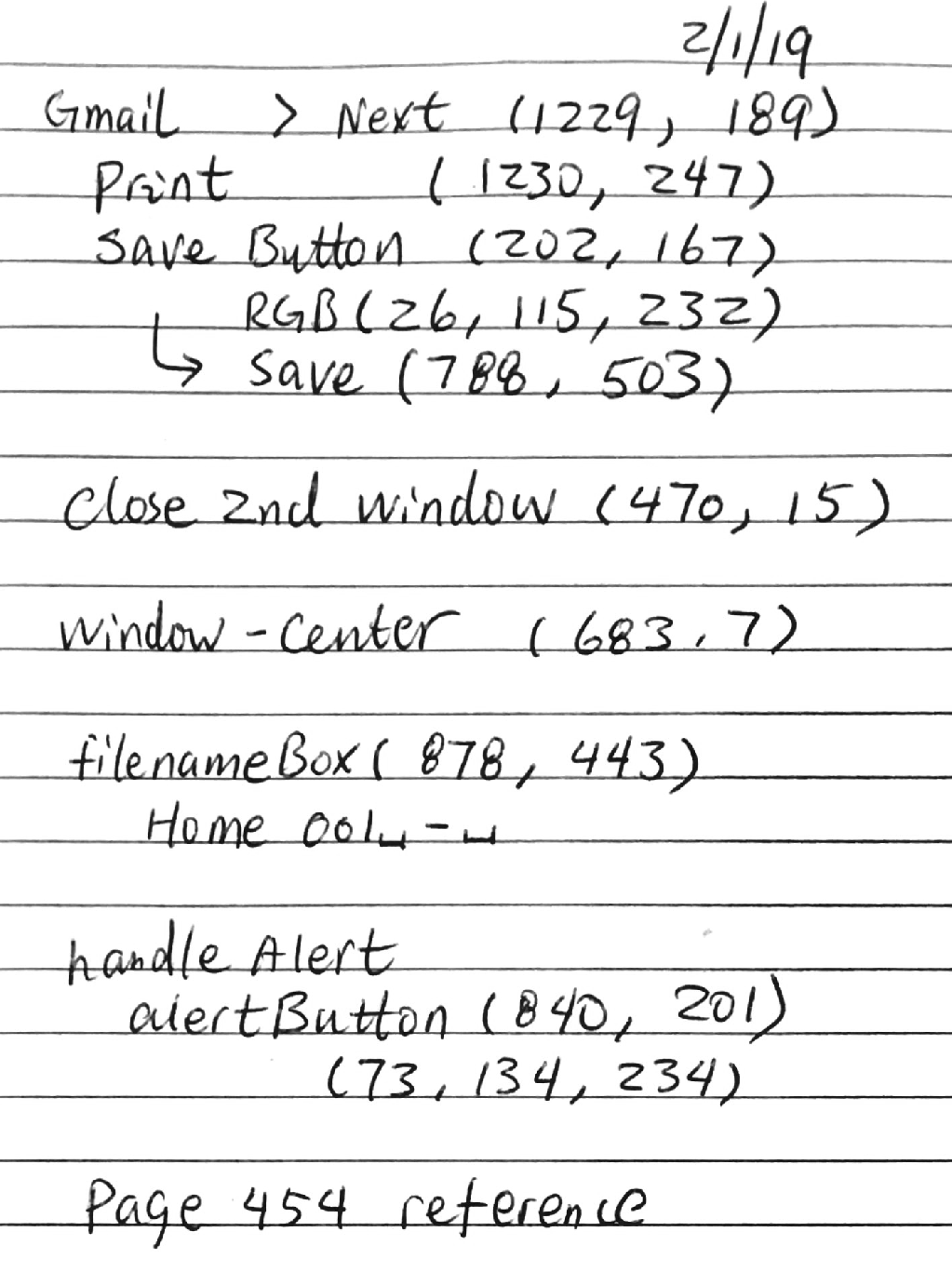Python Code to Save Emails in Gmail to PDF Files
One of my work tasks requires me to save hundreds of emails in my work Gmail account to PDF files in local hard drive. I could do it manually spending hours saving emails, or I could write a python program to do the work. No doubt I prefer the second approach.
A google search finds several online articles discussing how to do it. A typical method is to install a Chrome plugin for the browser, and the plugin will do the work. But granting permission to a plugin to read my work emails is not acceptable.
After reading some articles, I settled on two methods. The first one is to select and export emails in Gmail to a .mbox file, then write a python program to read the .mbox file and save emails. The second one is discovered when I was reading the last chapter of Al Sweigart’s wonderful book Automate The Boring Stuff With Python. This method uses the pyautogui module and involves writing a python program to simulate mouse button clicks and keyboard key presses to save emails. The program is like a person is clicking the mouse button and typing on the keyboard.
Let’s look at the first method. An article on Lifwire.com has step by step guide on how to save emails to a .mbox file. The python standard library modules mailbox and email can read emails in the .mbox file. I spent some time writing a python program, which also parses email content and extracts useful information from emails. The code structure looks like this.
import mailbox
import email.header
import email.utils
import time, datetime, argparse
import re, csv, copy, os # for os.path.exists
def parse_html(message):
'''parse a message and return html_content'''
if message.is_multipart():
content = ''.join(part.get_payload(decode=True).decode(
'utf-8') for part in message.get_payload())
html_content = content
else:
content = message.get_payload(decode=True)
html_content = content.decode('utf-8')
return html_content
def parse_date(message):
'''return a date of message of format datetime'''
date = message['Date']
dt_parse = email.utils.parsedate(date)
timestamp = time.mktime(dt_parse)
dt = datetime.datetime.fromtimestamp(timestamp) # dt of the message
dt = dt + datetime.timedelta(hours=3) # email time has an offset
return dt
def parse_subject(message):
subj = message['Subject']
s1 = ' '.join(subj.strip().splitlines()) # remove multiple \n or ' '
s2 = ' '.join(s1.split())
return s2
# ... other methods for parsing email contents
if __name__ == '__main__':
mbox = mailbox.mbox(path)
save = True # flag for parse emails, not save them
for message in mbox:
# code to parse emails
html = parse_html(message)
# ...
if save:
fn = '{}'.format( ... )
f = open(fn, 'w')
f.write(html)
f.close()
I find a major flaw in this approach a few days later. The Google archive system has a limit on the number of time a user is allowed to export emails to .mbox files. Once the daily limit (3 times on my account) is reached, it does not allow a user to export emails that day. The system simply gives a message “Please try to create your archive again”.
When I am reading the last chapter of Al Sweigart’s book, I realize that the pyautogui module can be used for this task. Here is the code to save emails,
# save_emails.py by Geroge Zhang on 2/1/2019
# The GMail window should be in a status shown in SaveEMails.png
# The EMails should be in a folder(label), the program clicks next button
# This program only works on my laptop
# Chrome settings -> Advanced -> Privacy and security -> Content settings ->
# pop-ups and redirects -> allow => add https://mail.google.com
# setup the program
import pyautogui # this requires installation
import time
pyautogui.PAUSE = 0.1
pyautogui.FAILSAFE = True
TOTALEMAILS = 10
START = 1
nextButton = (1229, 189)
printButton = (1230, 247)
saveButton = (202, 167)
filenameBox = (878, 443)
saveDialog = (788, 503)
closeButton = (470, 15)
centerWindow = (683, 7)
print('>>> 5 Seconds to start <<<')
time.sleep(5)
##print('Click window center to activate Gmail')
##pyautogui.click(centerWindow[0], centerWindow[1])
print('Please click the first email in a label group')
print('>>> 5 Seconds to start <<<')
time.sleep(5)
for i in range(START, TOTALEMAILS + START):
print('\nNow click the print button')
pyautogui.click(printButton[0], printButton[1])
time.sleep(5)
print('Click the Save email button')
pyautogui.click(saveButton[0], saveButton[1])
time.sleep(1)
print('Click filename field')
pyautogui.click(filenameBox[0], filenameBox[1])
time.sleep(.5)
pyautogui.press('home')
filename_prefix = '{0:03}'.format(i) + ' - '
pyautogui.typewrite(filename_prefix)
time.sleep(.5)
print('Click the Save file button')
pyautogui.click(saveDialog[0], saveDialog[1])
time.sleep(.5)
print('Close the second window')
pyautogui.click(closeButton[0], closeButton[1])
time.sleep(.5)
print('Click next button')
pyautogui.click(nextButton[0], nextButton[1])
time.sleep(.5)
print(' >>> Done <<< ')
The program is able to save 1500 emails in about four hours. Depending on the network speed, the
sleep seconds between tasks can be adjusted. Sometime the program may abort for
some reason. Change the variables TOTALEMAILS and START at the beginning of the program
to resume running.
You need to manually save a few emails in Chrome browser to understand what the
program is doing. How do I get the coordinates of the buttons on Gmail interface? The
Al Sweigart book includes a mouseNow.py program. I simple write down the coordinates
on a piece of paper and then type those coordinates into the program.
